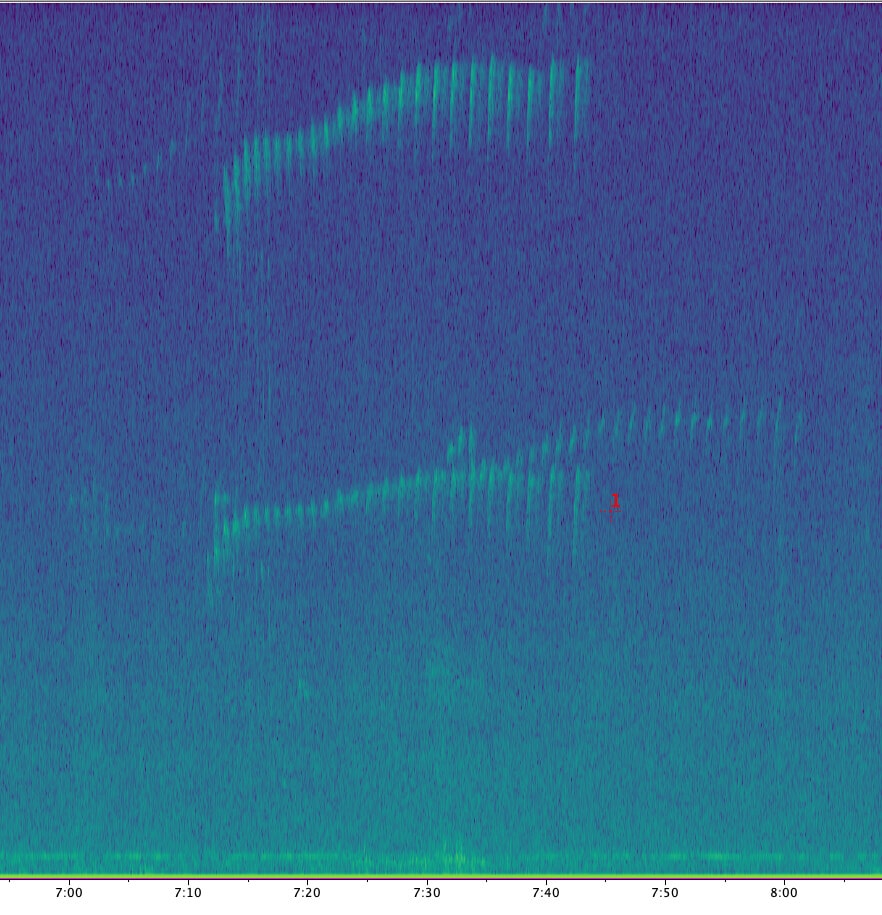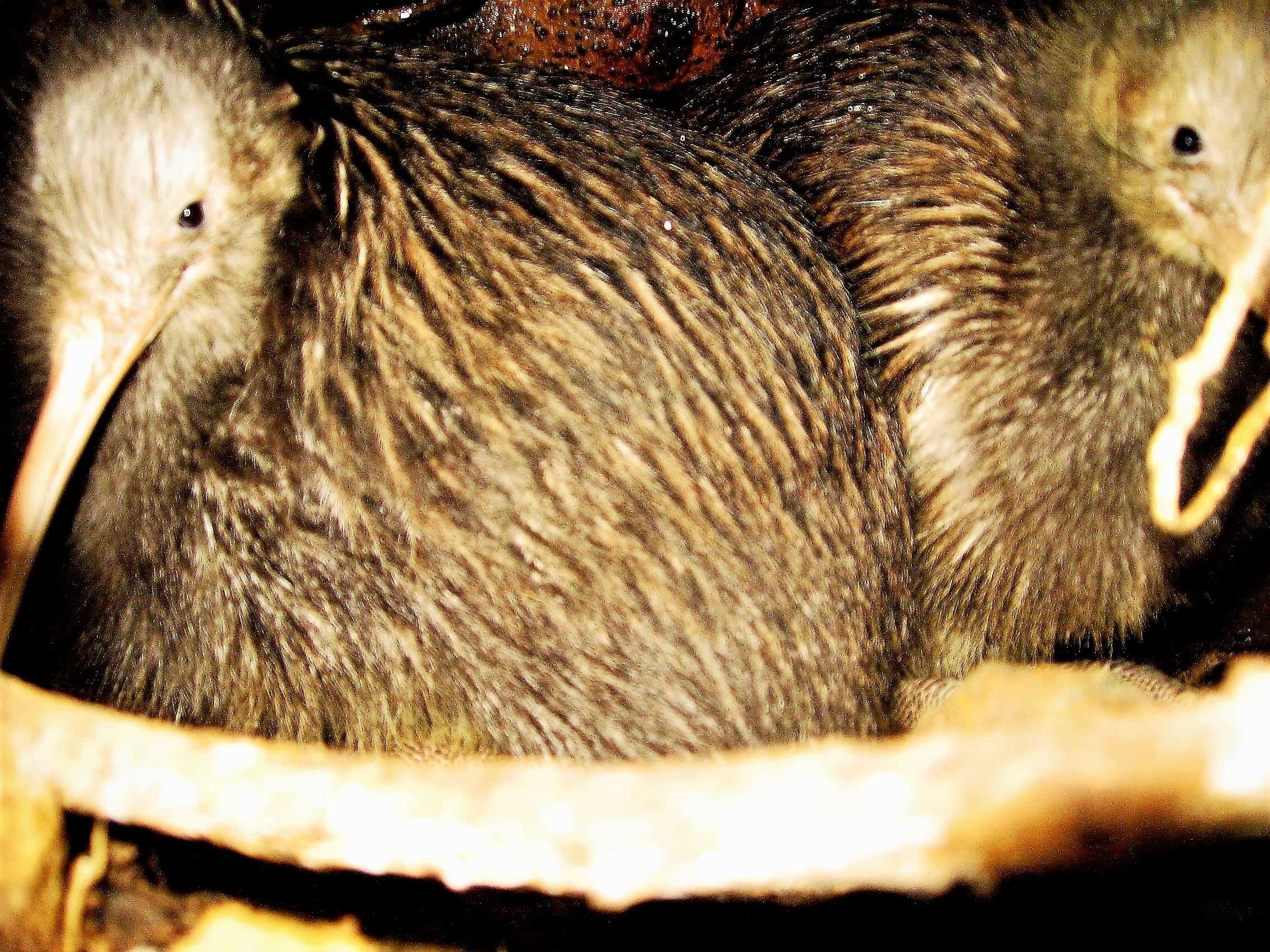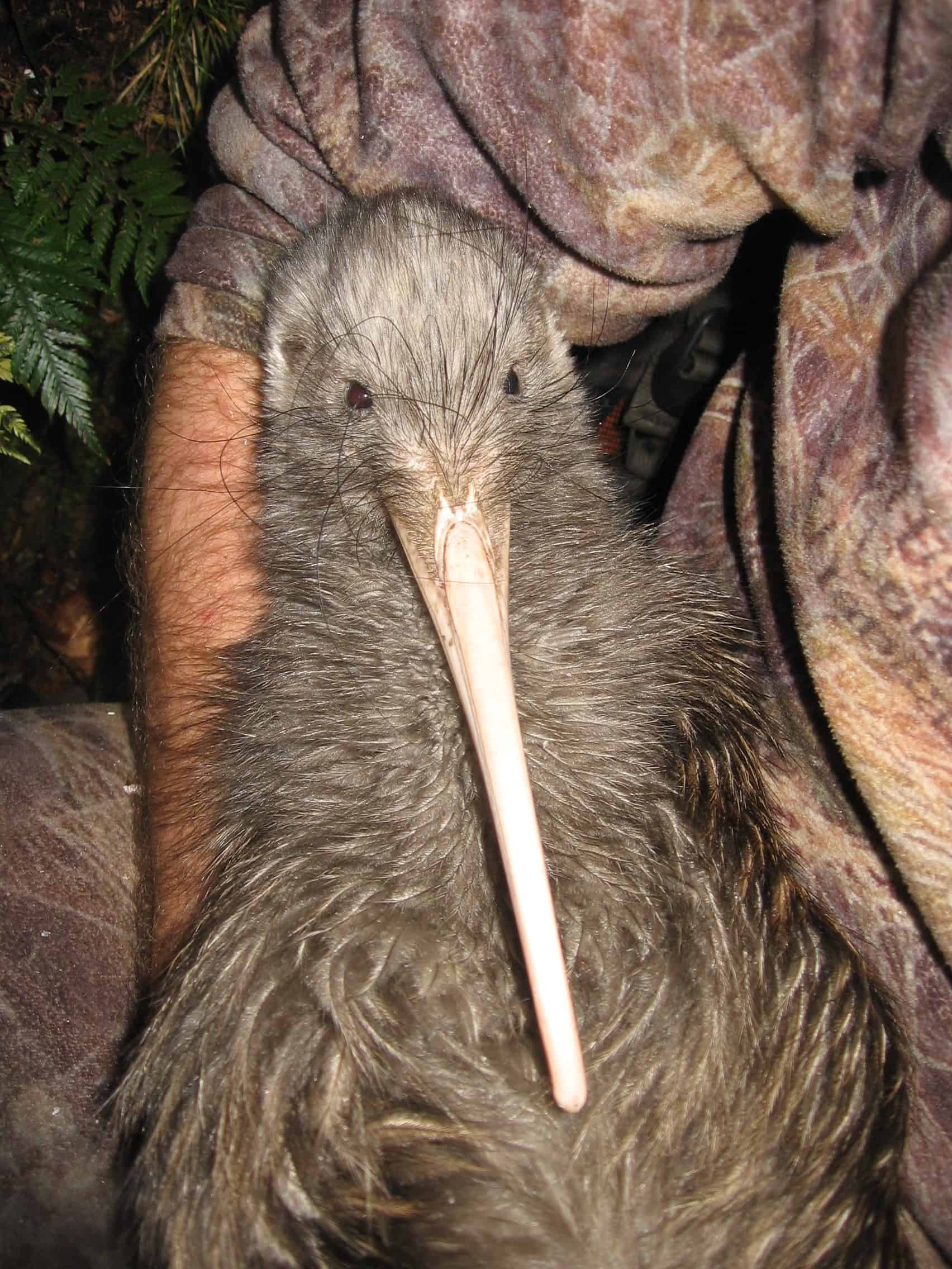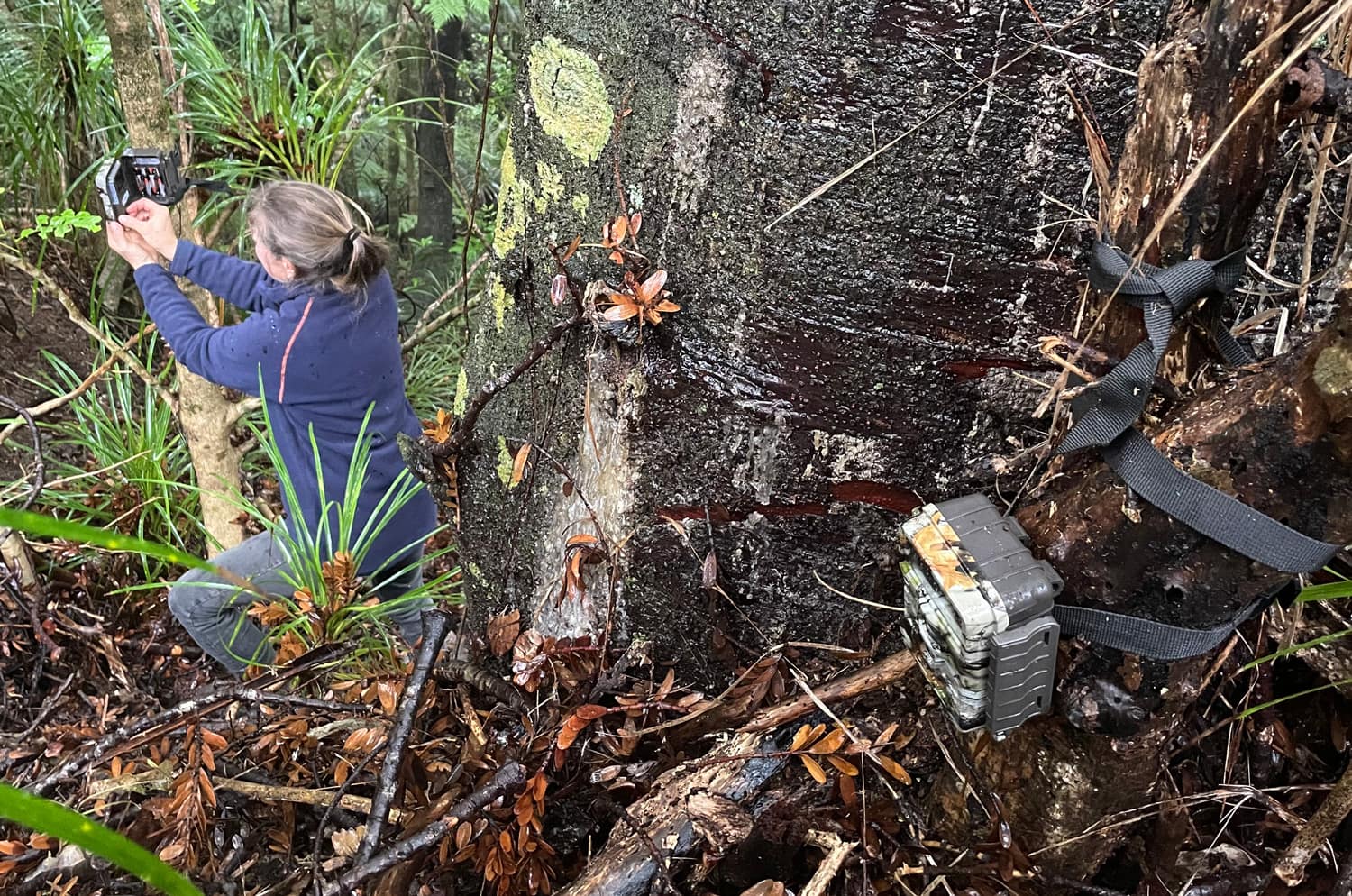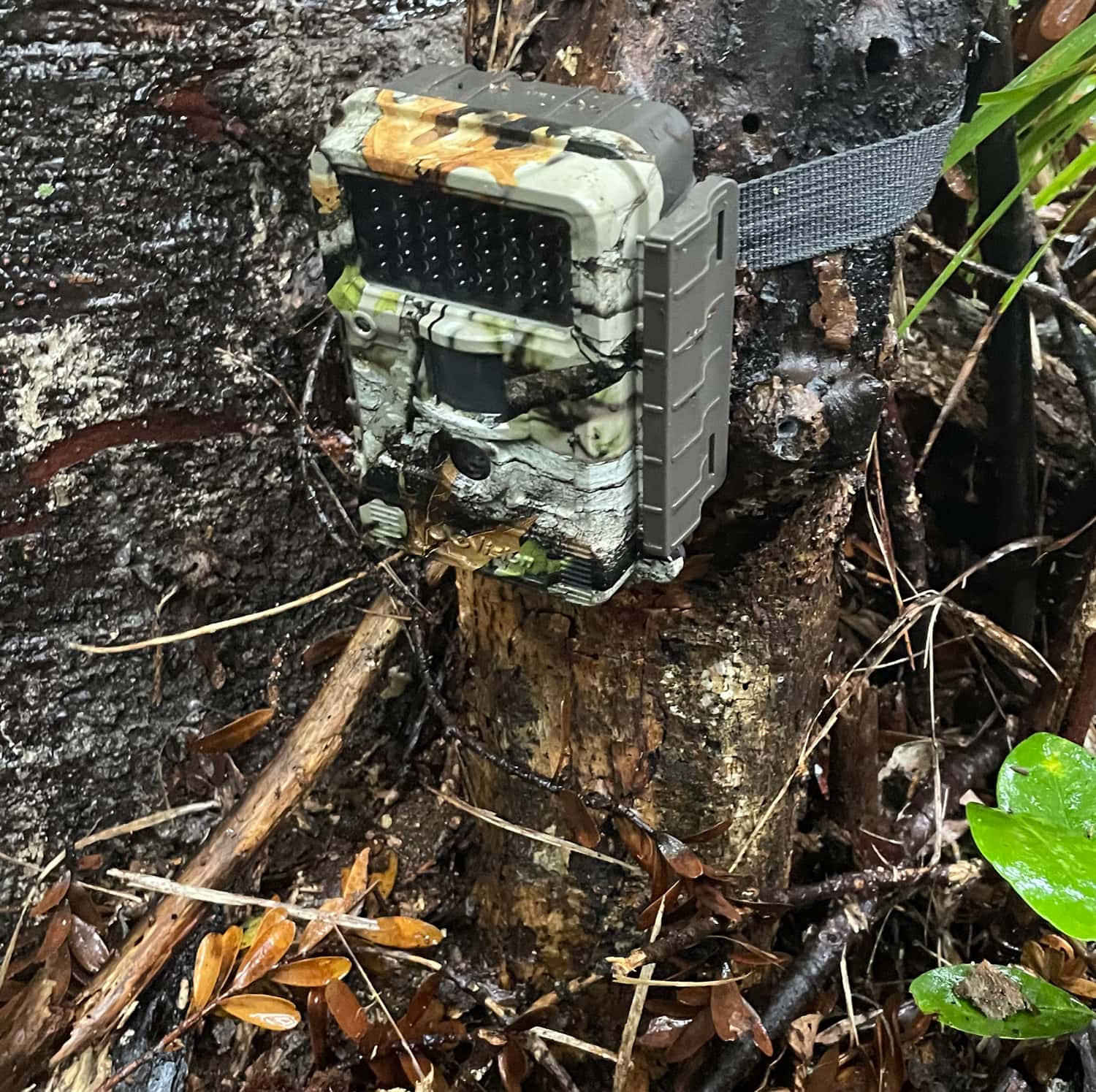Meet our Kiwi
Meet our Monitored Kiwi – Fred, Graham and Terry
ABOUT FRED, GRAHAM and our new addition, TERRY
Over several years MRHLG has monitored and looked after Fred and Graham, two adult male North Island Brown Kiwi fitted with radio transmitters in the beautiful podocarp core area of the MRHLG project area. We now monitor a third bird, Terry.
Transmitters are small radio tags attached to a leg that send signals telling us what these kiwis are doing. They work on movement – the more active the bird, the more likely it is off the nest. Transmitters allow us to monitor how kiwi cope with events such as habitat and nest disturbance by mammalian predators and climate events or changes (rain and drought).
We can determine what our local kiwi are doing through the year – what time they leave their burrows at night and how long birds are out feeding. Some birds feed for over 13 hours a day in drought conditions, meaning they are out in daylight and more at risk from dogs, traffic and people.
Our Kiwi are health checked annually. It is a great time to see a kiwi up close and learn more about how amazing they are.
When nesting begins, the signal allows us to identify the site to set trail cameras to watch the nest from a safe distance providing vital information. Cameras show newly hatched chicks venturing out into the wide world. They also have picked up stoats and pigs hassling the kiwi, sometimes resulting in nest desertion.
The radio frequency information tells us if the bird is nesting or not, for how long, what time they left their burrow last night, how long they were active for the past few nights and when they have hatched or deserted their nest. It will also tell us if the kiwi is dead or has lost its transmitter.
Fred
Fred was our first monitored bird, and lives with his partner Jade. He was named after local identity Fred Barnes a long-time supporter and inaugural member of the group. Fred’s territory is right beside the road, which he regularly crosses. Fred and Jade have successfully produced a healthy chick most years despite nests close to the roadside. The first clutch may have two eggs but rarely both hatches. One year Fred hatched two chicks in one nest.
Fred’s transmitter started becoming unreliable in late 2022 and it stopped working in January 2023. The certified kiwi conservation dog located him on 24 January and Lesley Baigent, the certified kiwi handler, removed the failed transmitter. Fred was retired – after 9 years it was time for him to have a break from wearing it.
Graham
Our second Kiwi pair are Graham, named after Graham Sheard a keen conservationist, and his partner Matahua (meaning fertile). Unfortunately, Graham has a history of poor nest site choices and is not as successful in hatching Matahua’s eggs. This year his nest site is at the end of a lawn, close to humans and dogs.
Graham and Matahua have generally nested twice every year but have deserted quite a few times, with a rotten egg as well as stoats and pigs hassling him, being the causes. This has given us valuable information in kiwi recovery, but is upsetting to see.
Graham ‘s monitor was replaced in May 2023 – he is a lovely bird to handle. He had lost a little weight since last year, but was found to be in moderate breeding condition, weighing in at 2025gms.
Terry
In May 2023, a new transmitter was put on a young adult male, found deeper within the valley where Fred resided. He was a good weight for his age, weighing 1630gms and in good condition.
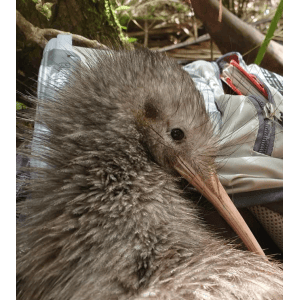
This new kiwi was named in honour of Terry Hatch, who has spent his life promoting the conservation and regeneration of native bush. Terry is too young to breed yet, but we are watching to see whether he stays around the same spot or decides to move into new territory.
We’re looking forward to following Terry’s adventures in the future, not to mention the scientific data that he will provide.
Adverse weather, broken eggs, and pig damage to nest sites are some reasons why kiwi such as Fred and Graham have had to abandon nests. Despite this, unless in a drought, both pairs will incubate a second egg to full term, indicating two good kiwi pairs.
We now know that our Kiwi emerge and become active at dusk, much earlier than previously thought! They may not be calling, but they are out of their burrows. Weekly monitoring has shown that they haven’t been so active during recent storms but thankfully, better weather usually brings them out and about again.
We continue to urge people to take care on the roads in the evenings, and to keep dogs secure.
Video of Terry foraging near his burrow in October 2023. Plus a rat.
Kiwi call spectograms
Here are two screenshots from our Kiwi Call listening data (May – June 2023).
This first screenshot is at Orua Bay – a male calls first close by followed immediately by a female. To have this dramatic spectrogram pattern she must be just about underneath the acoustic recorder. We call this pattern a kiwi duet, it signifies a breeding pair and we have been lucky enough to have many of these within our project area again this year.
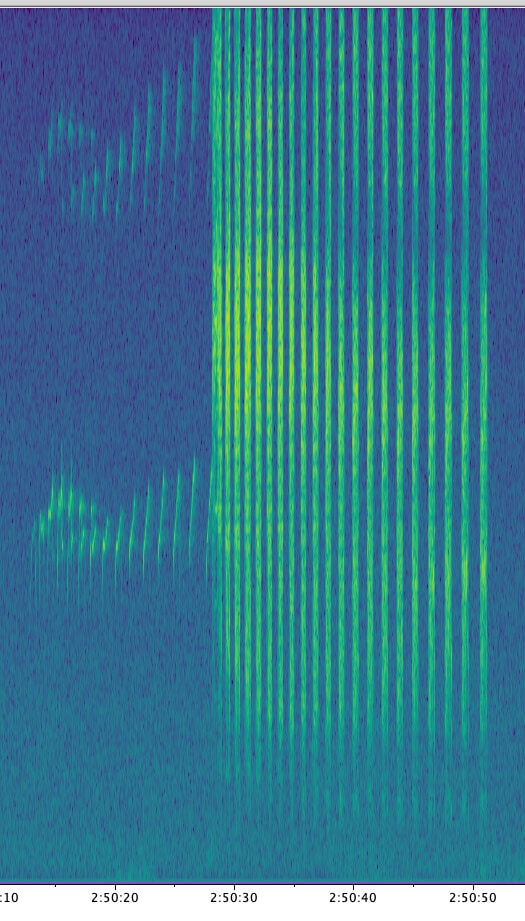
The second screenshot shows two males calling at the same time. You will notice one has a brighter spectrogram, is closer to the recorder and the second the more faded image, has a higher and wider frequency, he is further away.
The frequency of call appears to be individual for each bird and we often see very different spectrogram patterns from the kiwi calling each night.
